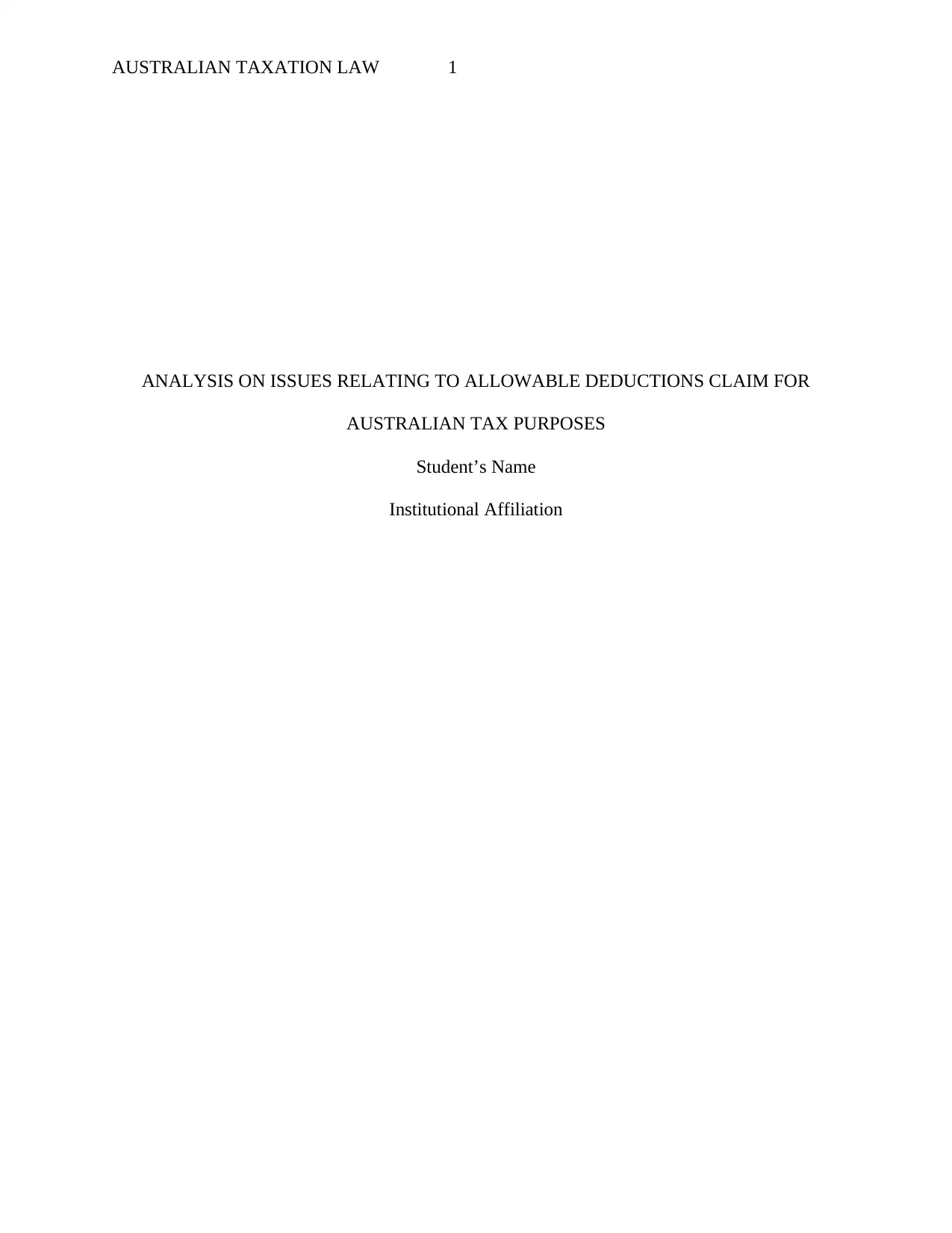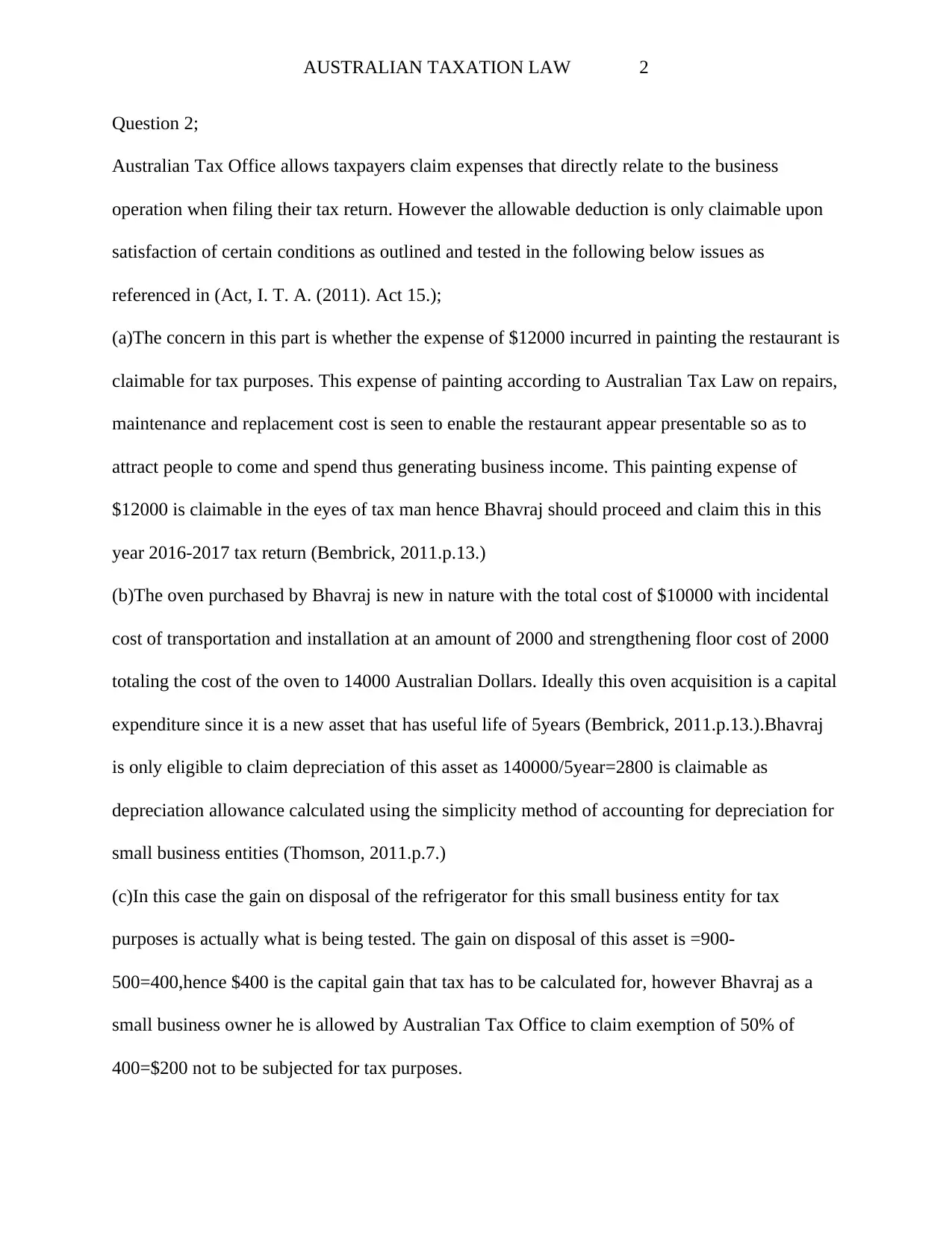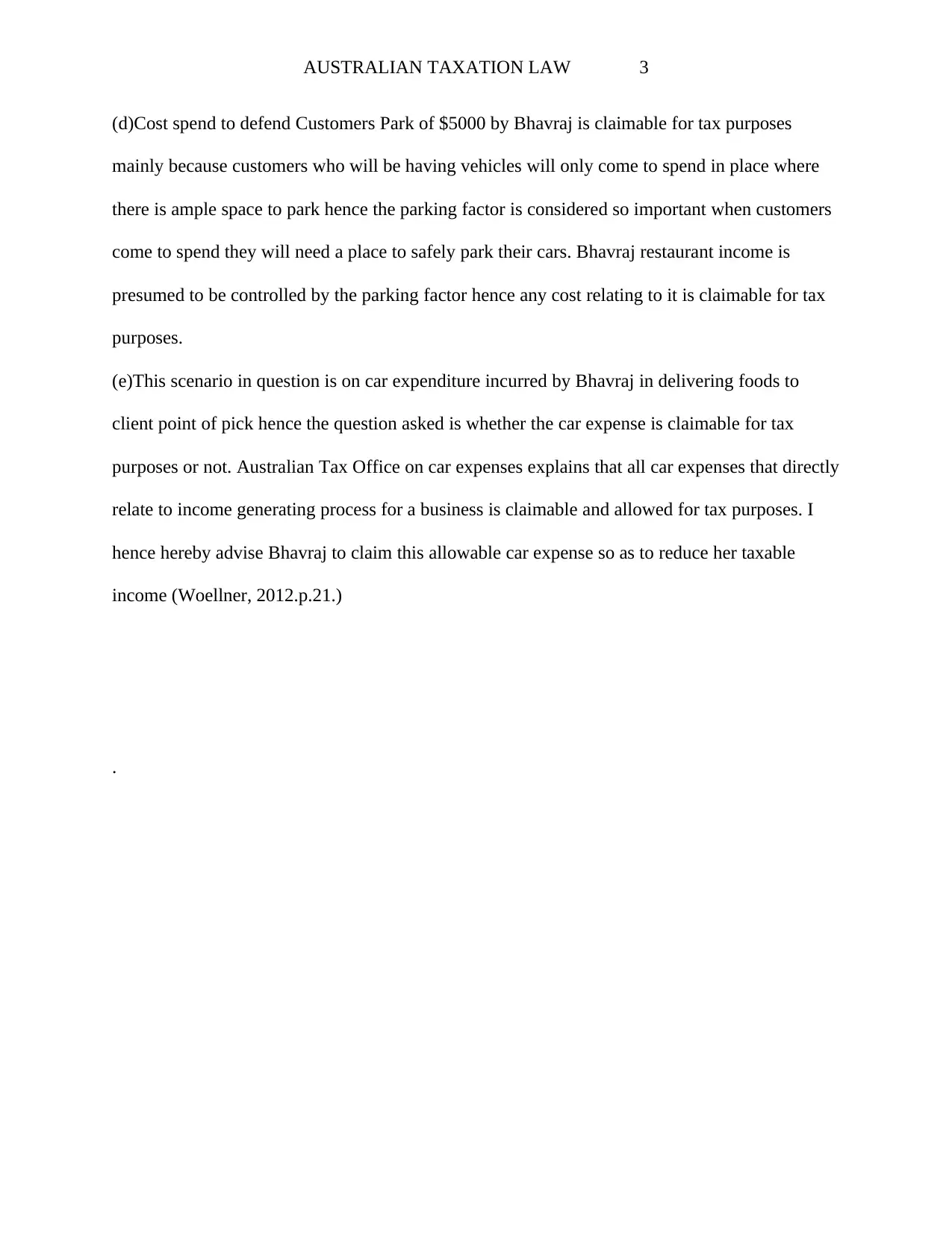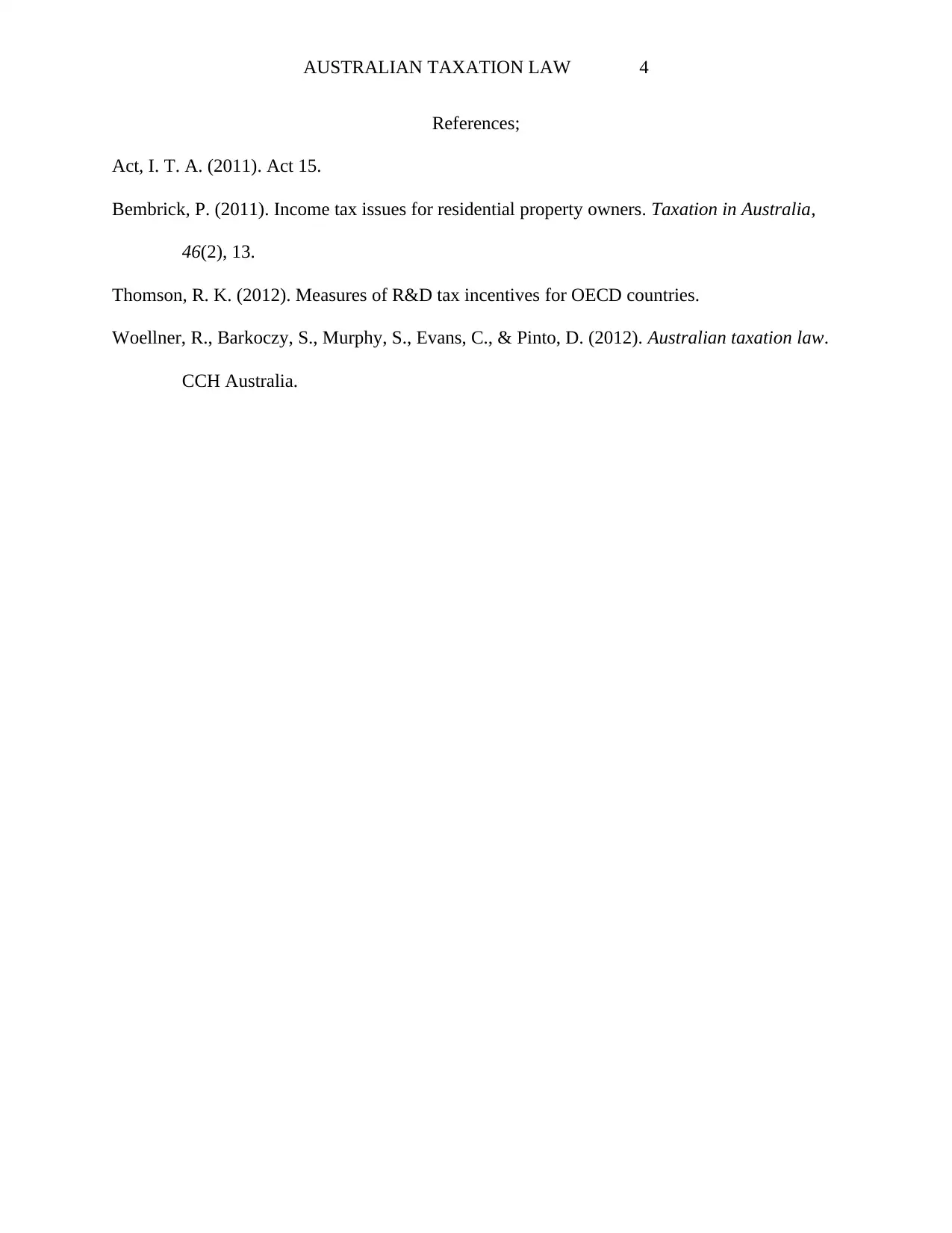Analysis of Allowable Deductions Under Australian Taxation Law
VerifiedAdded on 2023/06/12
|4
|662
|362
Homework Assignment
AI Summary
This assignment provides an analysis of various expenses and their deductibility under Australian Taxation Law for the financial year 2016-2017. It examines scenarios related to a restaurant owner, Bhavraj, and assesses whether expenses such as painting costs, oven purchase and installation, refrigerator disposal, car park resealing, and car usage for deliveries are claimable for tax purposes. The analysis refers to relevant sections of the Australian Tax Law, addressing capital expenditure, depreciation, and exemptions for small business owners. It concludes by advising Bhavraj on which expenses can be legitimately claimed to reduce taxable income, referencing specific legal precedents and guidelines from the Australian Tax Office.
1 out of 4










![[object Object]](/_next/static/media/star-bottom.7253800d.svg)